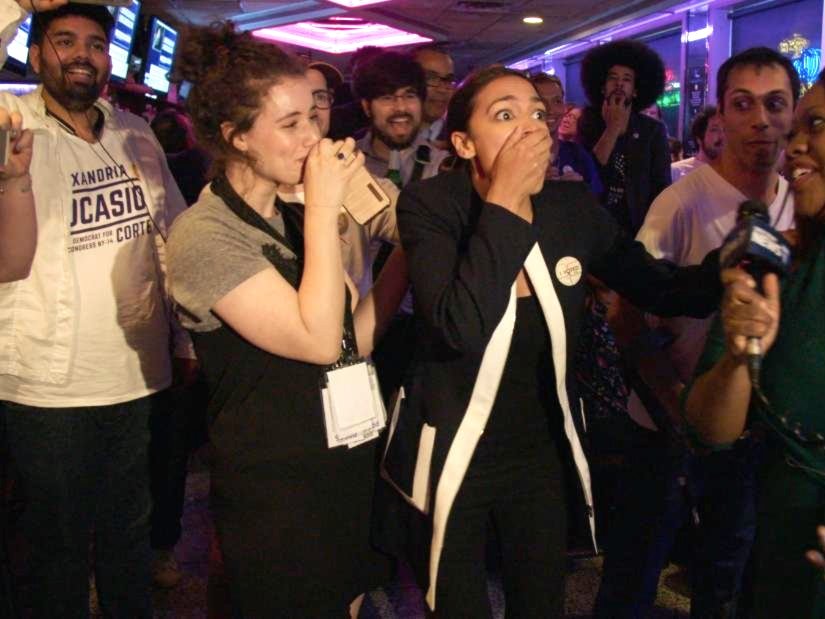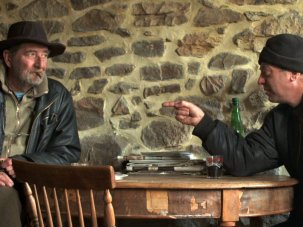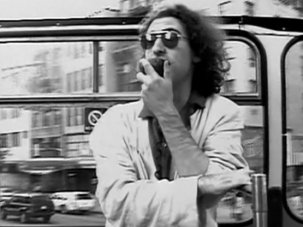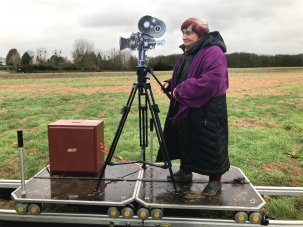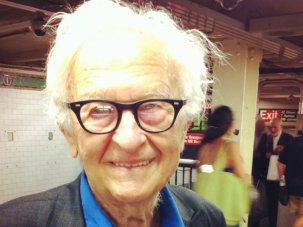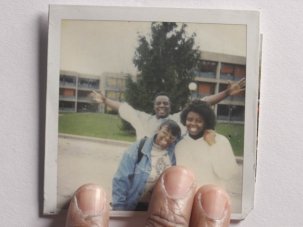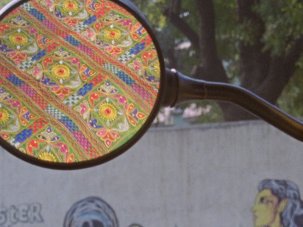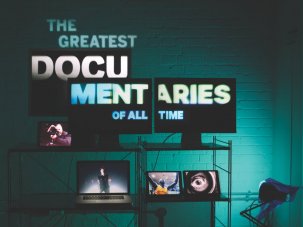There’s a scene in the documentary Knock Down the House when the uber-charismatic, soon-to-be US Representative Alexandria Ocasio-Cortez embraces her inner pro wrestler, grabs the microphone at an otherwise sleepy debate against a vastly overmatched representative of her opponent and becomes, among other things, a documentary superstar. Director Rachel Lears and editor Robin Blotnick cut from a wide shot of a sparsely attended gymnasium somewhere in the Bronx, New York to a straight-on shot of Ocasio-Cortez, her opponent and the moderator, three folding chairs and table, in what the viewer is guided to assume will be a quiet scene.
Knock Down the House and Let it Burn open in the UK at Sheffield Doc/Fest on 6 and 9 June 2019, respectively. Knock Down the House is already on Netflix.
Scheme Birds premieres in the UK at the Edinburgh International Film Festival on 24 June 2019.
The Gospel of Eureka premiered in the UK at the 2018 edition of Sheffield Doc/Fest.
This campaign stop is such a minor event that Ocasio-Cortez’s opponent, the soon-to-be-shockingly-defeated incumbent Joseph Crowley, didn’t even bother to show up. From the straight-on shot we cut to a modest shot of a few attendees nodding along with Ocasio-Cortez as she forcefully declares, “we are making excuses for absentee leadership!” The filmmakers then deliver a stirring cut back to Ocasio-Cortez now standing in front of the folding table, microphone in hand and fire in her words, looking like a fucking rock star.
This is an action framed and edited for maximum effect. It’s an act by a politician engaging in a specific, extremely focused kind of social performance, an act of power by a woman with a powerful personality battling to gain political power, all magnified by the camera and an intuitively exhilarating edit. Because Ocasio-Cortez is a politician running for office, the inherently collaborative relationship between subject and filmmaker takes on an exaggerated charge. The film was released after her meteoric rise to victory, of course, but if you were to show this scene, this edit, this dramatic, deliberate rendering of documentary performance, you’d be hard pressed to find anyone who wouldn’t declare Ocasio-Cortez a winner.
Documentary performance is always a combination of inherent and manufactured qualities, always a live-wire collaboration. Ocasio-Cortez’s grace, command of the issues, wide eyes and infectious energy are all innate qualities amplified by the clearly adoring camera and sympathetic edits. Great nonfiction performance is essentially charisma plus filmmaking decisions. Ocasio-Cortez’s excited run into her victory party – the emotional climax to one of the great scenes in political documentary history – parallels another electric walk into a room by another great nonfiction performer, John F. Kennedy, in the seminal Primary, with legendary cameraperson Albert Maysles magnifying JFK’s magnetism with his dexterous and patient handheld lens.
Ocasio-Cortez’s darting, curious eyes remind me of another of 2019’s most exciting documentary performers, a girl named Gemma from Ellen Fiske and Ellinor Hallin’s debut feature Scheme Birds, a film which I had the pleasure of awarding the Best Documentary prize along with my fellow jurors at the 2019 Tribeca Film Festival. The maxim that “when you cast your film, you cast your fate” is especially true in documentary and 16-year-old Gemma’s eyes communicate a depth beyond her years as she navigates working class Motherwell, Scotland in what amounts to a nonfiction star vehicle. Much of the film is driven by her active eyes as we watch her think her way through one dilemma after another. That Gemma reportedly came up to Fiske and Hallin demanding to be their subject only adds to the sense of serendipity, structured.
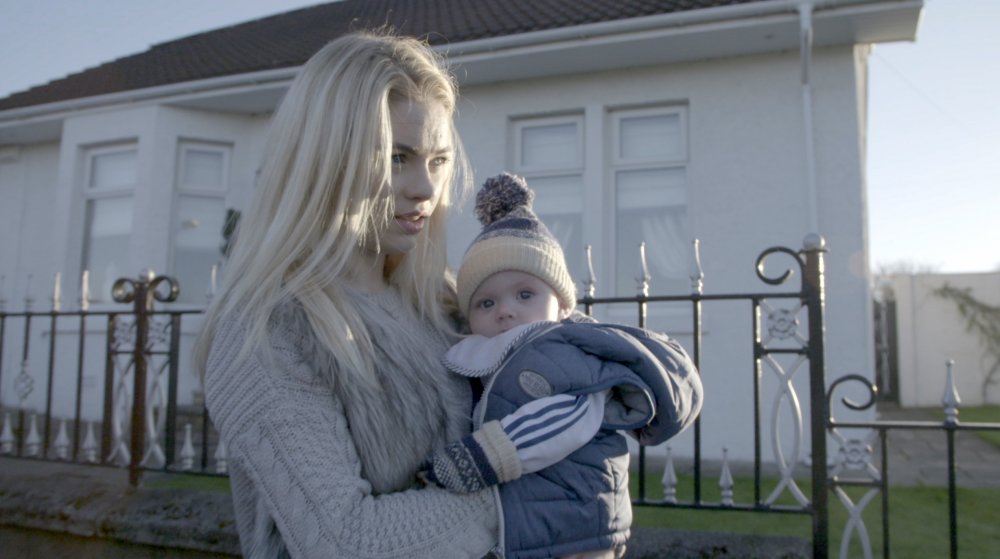
Scheme Birds (2019)
Great documentary performances are key to another pair of recent gems. In Maíra Bühler’s Let it Burn, the director allows her subjects (the down-and-out in São Paulo’s Parque Dom Pedro hostel) to enter and exit her frame as they wish, creating a uniquely pliant, shared stage for a sometimes-searing brand of collaborative documentary performance. Bühler instructed her cinematographer to not follow the action in a traditional way, which turns the observational camera into a two-way dance; these characters know we’re watching and when they project their performances to the rafters, the film becomes a politically potent act of seeing.
Let it Burn trailer
In Michael Palmieri and Donal Mosher’s latest film The Gospel of Eureka, the sensual, the civil and the divine collide in an Arkansas town as drag queens and passion play enactors alternate between thick-layered camp and human frailty. Here everyone is playing directly to the camera, on stage and in interview, and having this opportunity to watch all kinds of folks engage in the act of being themselves, with all the glorious falsity that implies, leads us directly to core truths about how we humans actually hold it all together.
The Gospel of Eureka trailer
Great performances are often the most overlooked aspect of great documentary films. We audiences naturally resist the seemingly contradictory notion of nonfiction performance, because what we think we want from a piece of documentary content is to not be manipulated by acting. The camera is, of course, drawn to the most alluring and enigmatic among us, and documentary filmmakers tie their fates to their subjects’ abilities to deliver Screen Actors Guild-worthy enactments. If there’s a camera, there’s a performance; what we crave from the subject-filmmaker collaborations we consume is the illusion of authenticity, which means, of course, good-not-bad acting.
With Ocasio-Cortez and others burning up our screens this summer with their uniquely-structured nonfiction appeal, I thought it might be fun to look at 20 of my favorite documentary performances of all time, a decidedly subjective, merrily incomplete list ranked loosely for fun only. And much love to Bob Dylan, Noriko Shinohara, the cast of the Up series, Anwar Congo, Charles Crumb, Aileen Wuornos, Mads Brügger, Mr. Brainwash, Harvey Milk, Marjoe Gortner, Madonna, Jay Reinke, Orson Welles, my own subject-muses Brandy, Kati, Kate, Fernando, the boys of the Millennium Wrestling Federation and all the other indelible real-life characters who could and should make any great documentary performance list.
20 great documentary performers
20. Agnès Varda in The Gleaners and I (2000)

The late great Varda perfected her documentary character in The Gleaners and I: infectiously curious, impish, intellectual, and full of magic. She became everyone’s tough, whimsical aunt with a twinkle in her eye and a quip that could crush. Agnès-as-Agnès revealed to us our own world through tilts in perspective and shapeshifting stains; it was a character so iconic that when she passed earlier this year we all felt like we’d lost a friend.
☞ Agnès Varda obituary: a luminous art of an illuminated life
19. Ameena Matthews in The Interrupters (2011)
In Steve James’s The Interrupters, Ameena Matthews, who the Guardian once called a “Real Life Screen Heroine”, is one of the leaders of the activist violence intervention group CeaseFire in Chicago. Her job is talking people out of violent situations in some of the city’s toughest neighborhoods. What we witness is a person who needs to perform at a certain level in order to save lives – think of counseling as a kind of deeply empathetic act. This performance would happen with or without the camera; that we get to see it, heightened by James’s filmmaking, is emotionally thrilling.
18. The cast of Chronicle of a Summer (1961)
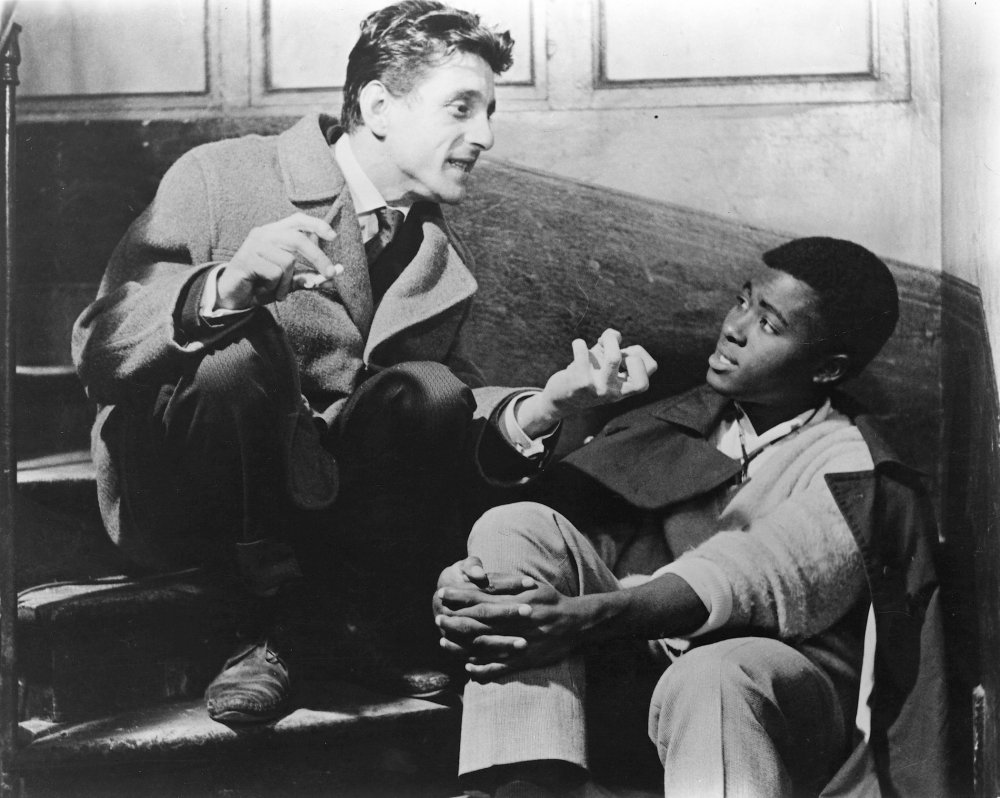
Jean Rouch and Edgar Morin effectively invented cinéma vérité with their Chronicle of a Summer and, despite the common and incorrect use of the word ‘verité’ to describe passive ‘fly-on-the-wall’ filmmaking, their still-radical film was all about collaboration with their documentary performers.
Marceline Loridan stands out among a memorable ensemble, beginning the film as an on-the-street interviewer asking Parisians the elusive question, “Are you happy?” Later she tells the story of surviving Auschwitz in a series of dramatic tracking shots that fully reveal her as a documentary actor, and eventually she joins the rest of her castmates as they watch the movie they helped make and argue about its veracity. The film’s cubist, self-aware search for Truth in synthesis remains, in part, a glorious tome to the act of performing oneself.
► Watch Chronicle of a Summer on BFI Player | Buy the DVD + Blu-ray
17. Bob and Marcel in Ne me quitte pas (2013)
In this sardonic buddy film by Niels van Koevorden and Sabine Lubbe Bakker, Bob and Marcel circle the drain together in rural Belgium. Days are spent ruining relationships, drinking, looking for places to commit suicide, practicing tough love, drinking, having accidents and more drinking. Bob is stoic and Marcel is a mess and the film gleefully and riskily relies on the men to be themselves at their most precarious. These guys love each other and the camera loves them. It’s at once miserablist and affirming, with some of the best onscreen chemistry in documentary history.
☞ The best of 2014 in cinematic nonfiction
16. Dieter Dengler in Little Dieter Needs to Fly (1997)
Dieter Dengler has practiced all his stories so many times that when Werner Herzog (a legendary documentary performer in his own right, especially in Les Blank’s Burden of Dreams) films him, we get basically a performance of a performance. The bald self-mythologising, including a fraught wink wink restaging of his being taken captive in Vietnam, which might otherwise be too self-conscious to reach the emotional depth necessary of a surely terrifying ordeal, gets transformed into something deeply complex and human.
15. The cast of The Arbor (2010)
Manjinder Virk, Natalie Gavin and Christine Bottomley are all actors. In her nonfiction film about the tragic legacy of playwright Andrea Dunbar, director Clio Barnard cast these actors and others to lip sync onscreen to recorded interviews of the real people in Barnard’s life most affected by the late writer’s downward spiral. The effect is distancing, haunting, disturbing and surprisingly revealing. Acting, among other things, is about finding the authentic through mannered technique, and the performers in The Arbor create fully formed human characters from scraps of trauma, allowing us to see something more than turn-the-channel misfortune.
► Watch The Arbor on BFI Player
14. Murray Ramsey King in King, Murray (1969)
Salesmen always make complex protagonists. In this rarely seen burst of nonfiction mania, a kind of pirate-radio companion to the Maysles brothers and Charlotte Zwerin’s classic Salesman, director David Hoffman films insurance salesman Murray Ramsey King in what the filmmaker called a “fictionalised documentary”. Aren’t they all? Murray, always at volume 11, spends the film trying to impress everyone, including the cameraperson and us viewers, with his would-be mastery over money, numbers and the opposite sex. He is pathetic, toxic and undeniably brilliant as a (maybe scripted) specimen of flailing masculinity.
13. Jafar Panahi in This Is Not a Film (2011)
The act of becoming a documentary subject has often been heroic, but never quite like this. Banned from making films in his native Iran, celebrated filmmaker Jafar Panahi turns the camera on his own life, or at least a highly curated version of his life, daring the authorities with a deeply subversive performance of self. Is he acting or is this merely an extended video selfie? Under the dangerous circumstances, this basic question at the heart of most documentaries gets supercharged.
12. Abu Jandal in The Oath (2010)
Early in Laura Poitras’s The Oath, Osama Bin Laden’s former bodyguard-turned-cab driver-turned documentary subject, who goes by Abu Jandal, is caught lying on camera. This reveals Jandal to be a hustler, an unreliable narrator and a fully complex human being, which frames his pro-jihad rhetoric in a way that allows us to start to understand its underpinnings in Jandal’s character. When he looks into the camera and impatiently asks Poitras to delete a previous day’s on-camera anti-Bin Laden confession, the stakes of this high-wire performance become all too clear.
11. The workers and citizens in Welfare (1975)
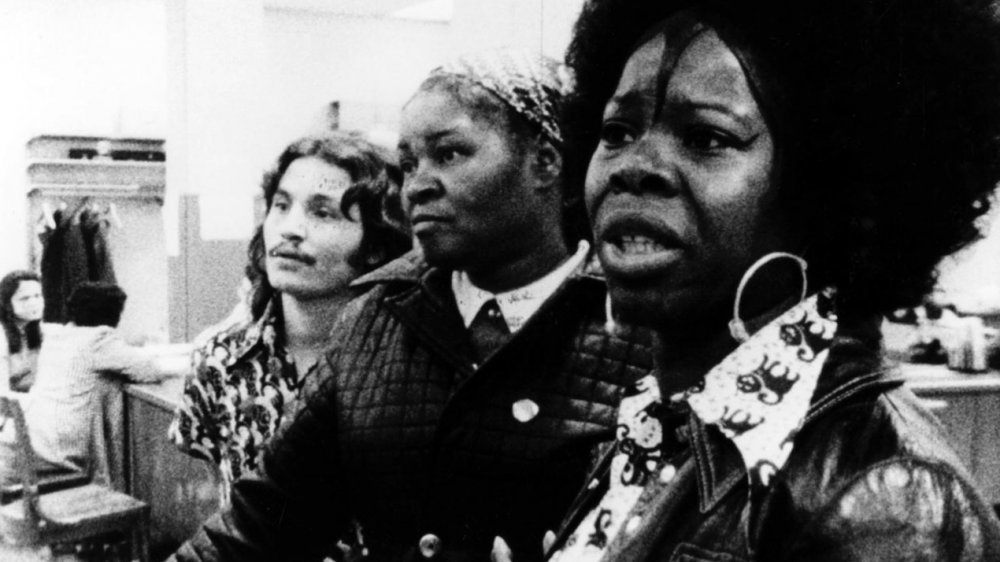
In Frederick Wiseman’s films we watch people engaged deeply in the social acts of maintaining the order of an institution… or trying to get something from it. In Welfare, one of his most important films, both sides of the desk – welfare worker and person trying to get support – act out roles determined by circumstance. We see people kick, yell and even lie to get the help they need, while we also watch the beleaguered administrators try their best to be human in the face of a Kafkaesque nightmare. Wiseman’s camera always humanises, and the candor of his subjects always breeds empathy within a cold system.
10. Yance Ford in Strong Island (2017)
Harnessing an unfathomable hurt, Yance Ford takes centre frame in this lucid working through of his brother William’s murder, relying partly on a past life as a performance artist to turn the anger, sadness and loss into something seeable. Near the beginning of the film, in extreme close up, straight into the camera and right at us, Ford declares “I’m not angry. I’m also not willing to accept that someone else gets to say who William was. And if you’re uncomfortable with me asking these questions… you should probably get up and go.” This turns interview into statement, a response to a question into a provocative confrontation. Throughout the film, Ford cannily uses a heightened awareness of his own face and body to force us to understand the tragically cyclical narratives of violence against black people.
☞ Strong Island review: a haunting memento of institutional racism and personal grief
☞ Read Robert Greene’s interview with Yance Ford in our October 2017 issue
9. Mark Borchardt and Mike Schank in American Movie (1999)
Are we laughing at Mark and Mike in Chris Smith’s classic American Movie? Sure we are, but we’re also watching a hyper-aware, undeniably collaborative expression of the rusted mythos of working class Midwest America, creating a kind of cringe comedy of documentary agency. Mark is the affably desperate dreamer, pushing against logic and reason (and maybe the limits of talent) to make his movie no matter what. Mike is his stoner sidekick, always out of it, but loyal to the bone. They are a comedy duo that could give Laurel and Hardy a run in what might be the funniest documentary ever made.
8. Tiny, Rat and Dewayne in Streetwise (1984)
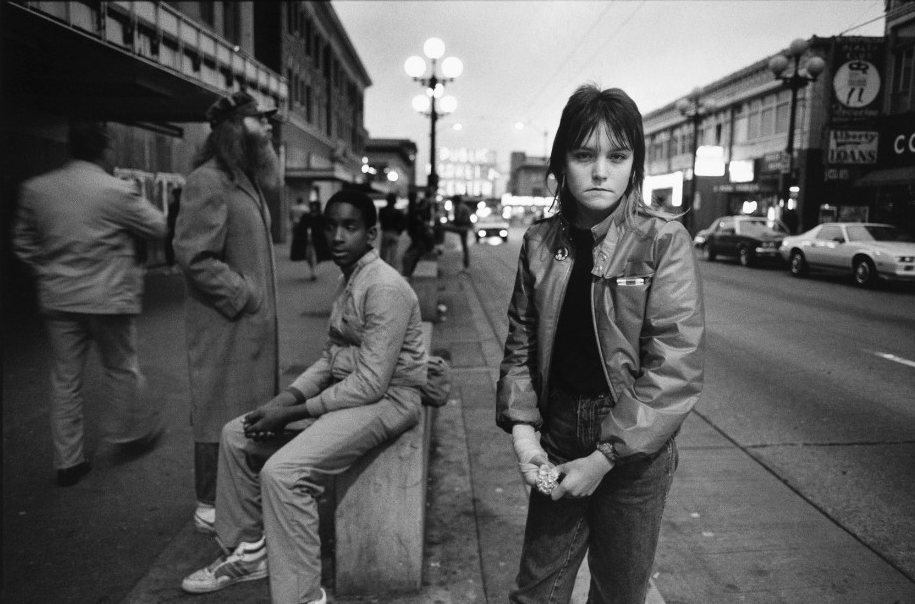
The thin lines between hustling, playing adult and documentary performance blur in Mary Ellen Mark and Mark Bell’s Streetwise. Tiny is the heart-of-gold scamp, whose essential innocence still beams through her cigarette smoke. Rat is part show off tough, part urchin philosopher and Dewayne is the achingly sweet boy with daddy issues and a pitiful fate. The streets demand their façades and the camera both heightens and exposes these kids’ tragic acts.
☞ Deep focus: The Other Side of 80s America
7. Young-Chan in Planet of Snail (2011)
Young-Chan lost his hearing and sight due to a serious fever when he was a small child and now he’s an accomplished poet of the sensual world. In Yi Seung-jun’s delicately rendered Planet of Snail, we observe the magnetic Young-Chan and his wife Soon-Ho as they navigate his limited/limitless world. It’s an impossibly beautiful love story with a bright light at its core, with Yi’s camera giving us a matter-of-fact connection to Young-Chan and his magical excitement about experiencing life. He’ll make you excited, too.
6. Allakariallak in Nanook of the North (1922)
The story of how Allakariallak became known to the world as Nanook in Robert Flaherty’s founding documentary myth Nanook of the North is well-told, but what’s less discussed is just how captivating the Canadian Inuk is in this star turn in the world’s first documentary blockbuster. With his beaming smile, sensitive eyes and the ability to make the bullshit Flaherty asked him to do look graceful and real (I often ask, did they do takes?), it’s no wonder the American filmmaker wanted a redo with his actor when all the footage was burnt up after their first attempt at making the film. That Allakariallak died because of tuberculosis and was reportedly broke a mere two years after his face was on billboards is awful and underlines just how brutally exploitative documentary filmmakers can be of their performers.
5. Timothy ‘Speed’ Levitch in The Cruise (1998)
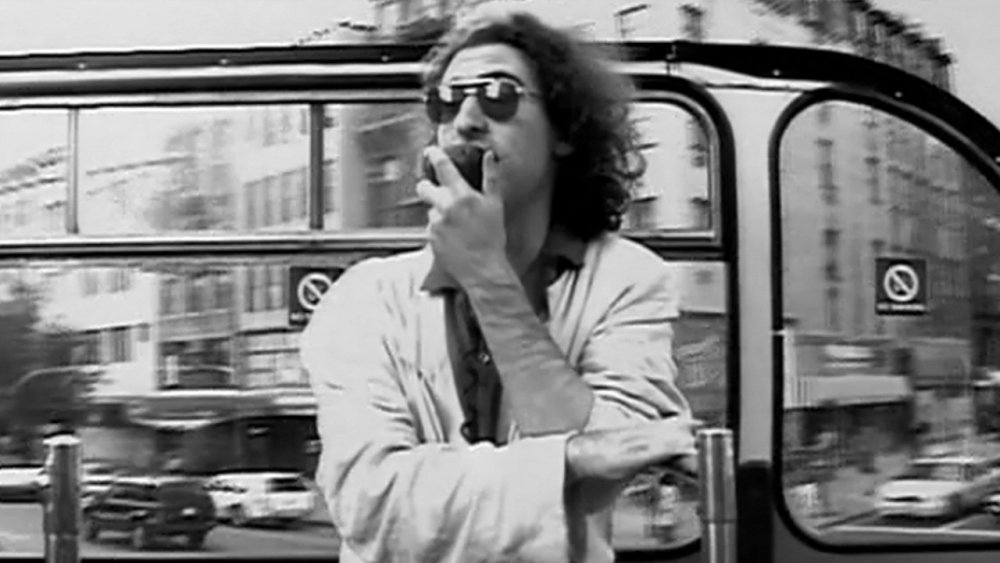
When Bennett Miller picked up his MiniDV camera to make The Cruise, part of the breakthrough was technological (it was the first film shot this way to receive major distribution), but it was also a breakthrough because of the unforgettable screen presence of one Timothy ‘Speed’ Levitch. Speed, a poet and life performer, was not famous when Miller started filming his now-legendary bus tours, and it’s this combination of lack of notoriety and self-aware performance that felt so radical. Miller set the stage and Speed took it with gusto; their two-man dance proved that all you needed was an expressive subject like Speed and a movie could happen.
☞ The Cruise at 20: looking back at the movie that broke the DV revolution
4. Edie and Edith in Grey Gardens (1975)
Name a more iconic duo. Two eccentric relatives of Jacqueline Kennedy hang out with Al and David Maysles (and wild racoons) in a dilapidated mansion in Long Island. Everyday drama, spontaneous show numbers, crushing vanity and co-dependence occurs. Grey Gardens may just be the best known nonfiction film ever made, having been reimagined and obsessed over for more than 40 years, because in Edie and Edith, the Maysles brothers found a perfect, beautifully human two-car trainwreck. We can’t look away, out of fascination, pity and love.
☞ In memoriam Albert Maysles, 1926-2015
3. Billy Mitchell in The King of Kong (2007)
How do you become the greatest villain in documentary history (with all due recognition to Idi Amin, Robert McNamara, Steve Bannon and all the other real monsters-turned-subjects)? Well if you’re video game champ Billy Mitchell, chief antagonist of Seth Gordon’s The King of Kong: Fistful of Quarters, first it helps to be an actually bad guy. Next get yourself a mean feathered mane; an awful tie collection; an air of misplaced confidence that would make David Brent wince; and a proclivity for comparing yourself to the Red Baron, God, Helen of Troy and all other sorts of mythic figures on your way to becoming ‘Gamer of the Century’… and you’re almost there. “No matter what I say it draws controversy,” pontificates Mitchell in the film. “It’s sort of like the abortion issue.”
2. The cast of Paris Is Burning (1990)
Venus and Danni Xtravaganza, Willi Ninja, Dorian Corey, Junior Labeija, Octavia St. Laurent and others let us into their grand ball in Jennie Livingston’s Paris Is Burning and American culture has never been the same. These queers and drag queens invented everything from voguing to slaying and we were allowed to bear witness, through Livingston’s camera and ace editor Jonathan Oppenheim’s choices, to the gloriousness. The word ‘charisma’ is hardly enough to describe what these black and latinx queens ooze on screen; their individual and collective performances radiate pure heat and colour in ways we’d never seen before. That the subjects of the film remain bitter over a lack of profit and credit-sharing is a cold reminder of how quickly a documentary can turn from exposure to exploitation.
1. Aaron Payne/Jason Holiday in Portrait of Jason (1967)
Shirley Clarke filmed the man who called himself Jason Holiday in an extended monologue that is part confessional, part therapy session and part psychodrama. Never in nonfiction has one man held the screen so dynamically; Clarke’s cameras slips in and out of focus and so does Jason’s sense of identity and purpose. Voyeuristic, elusive, strangely theatrical and emotionally wrenching, Portrait of Jason remains an experiment like no other, with the man onscreen chewing up all the scenery and giving what I think is the greatest performance in documentary history.
-
The Digital Edition and Archive quick link
Log in here to your digital edition and archive subscription, take a look at the packages on offer and buy a subscription.




